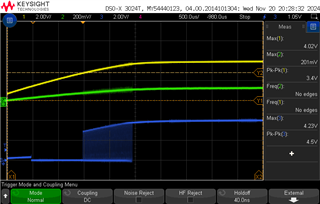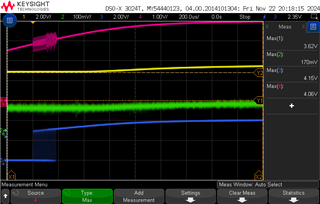Other Parts Discussed in Thread: LM3478
Tool/software:
Hi,
I am experiencing some issues where the boost converter doesn't switch. Please see my attached schematic (VR1 is set to 10K). My Vin is set at 4V, and my output is loaded with a 1k ohm resistor. For some reason, DR always matches V_IN voltage, but my voltage at TP7 is close to V_IN.
I read from other posts that a potential high inrush current could lock up the controller, but I didn't notice any spike in voltage from the input, output, or I_SEN. Were any potential mistake(s) made with this schematic? Thanks.





 (Zoomed-in view of the DR switching)
(Zoomed-in view of the DR switching)
